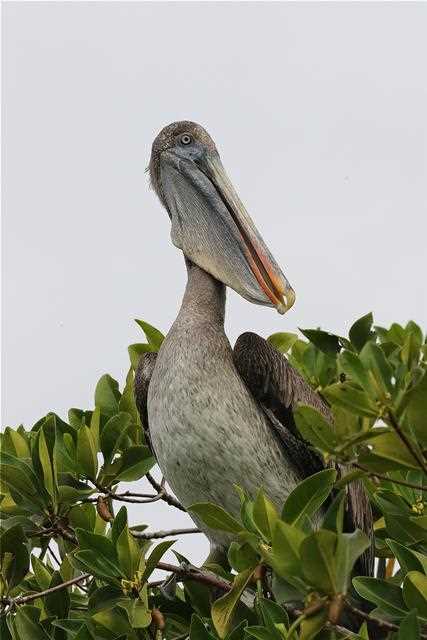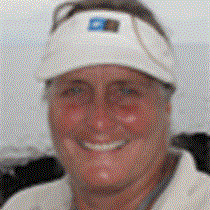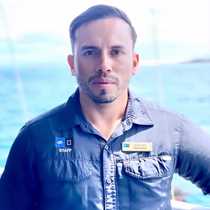On Thursday evening after dinner, Birute Mary Galdikas, world authority on Borneo orangutans, treated us to an interesting talk illustrated by amazing photos of her 45 years doing research on these severely endangered primates in Indonesia. Along with the rest of us, Birute is thoroughly enjoying this week’s expedition here in the enchanted Galapagos archipelago. Following her talk we headed off to bed – our days are literally sun up to sun down (but we do have a siesta after lunch!) and most nights many of us are in bed by 9:30 p.m.! By the time Captain Patricio Jaramillo radioed the boson to haul up the anchor of the National Geographic Islander, we were soundly sleeping. Tonight we navigated on fairly calm seas towards the central islands of Galapagos.
The Captain dropped anchor shortly before dawn off the large island of Santiago. When we gazed towards shore in the morning we were surprised to find a very different scene from all the previous days this week. Along its southeastern coast, Santiago is dominated by an extensive, barren, black lava field. This pahoehoe, or ropy lava, flow dates from 1897. And just offshore is a tiny reddish islet very aptly named Sombrero Chino, or Chinese Hat!
Breakfast was ready at 0700 and we enjoyed delicious eggs benedict, smoked trout and fresh tropical fruits. Naturalist Vanessa and an eager group of our guests paddled the bright yellow kayaks along the red and black lava shores of Sombrero Chino and Santiago Island. The rest of us happily loaded into two Zodiacs with naturalists Enrique and Jonathan and I, and we motored slowly along the rugged coast line photographing and watching Sally light foot crabs, herons, a few lone sea lions and to our delight – penguins!
After the boating, we wiggled into our wet suits and went out to snorkel from the Zodiacs in the shallow, turquoise channel between the two islands. Two Zodiacs with naturalists went out and had an absolutely marvelous time! The water was quite clear and there were literally thousands of fish of more than a dozen different species. We saw huge parrotfish, two garden eels, and several species of sea stars. But the highlights were seeing white tipped reef sharks and swimming penguins! I counted a dozen sharks, one resting on the sand, several sleeping in caves and under ledges, and others swimming right alongside us. Fast moving penguins flitted and sped after small fish and thoroughly entertained the snorkelers.
Vanessa took a small group of guests to the white coral beach on Sombrero Chino and they too had a marvelous morning. We were all back on board before 1100 and happily sipped a welcome cup of hot cocoa and took warm showers before we cruised north headed for the afternoon’s anchorage off the northern edge of the Santiago lava field. We had a delicious buffet lunch followed by a welcome siesta. I then gave a talk with photos about the experiences I had 30 years ago while living on Volcan Alcedo studying the giant tortoises and the introduced donkeys.
At 1545 we made a dry landing at Sullivan Bay on the extensive black pahoehoe lava field. The afternoon’s “lava hike” was very interesting and the surface of the lava flow constantly varied. Our naturalists pointed out a few pioneer plants and the endemic lava cactus, but around us were many square miles of essentially barren - yet astonishingly beautiful - lava. Everyday has been different as each island has its own unique sights and species. What will be in store for us tomorrow on these enchanted islands?









